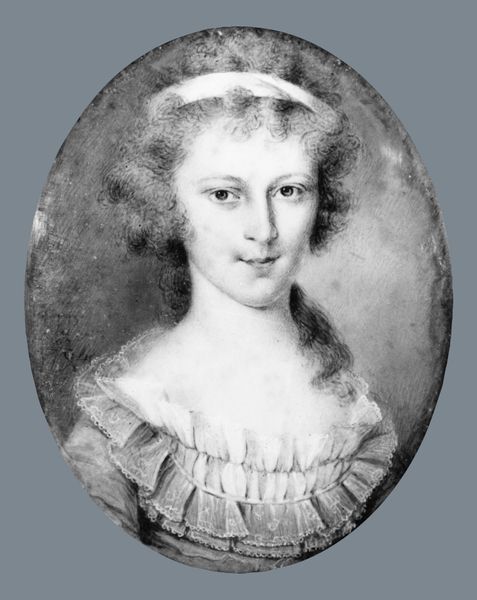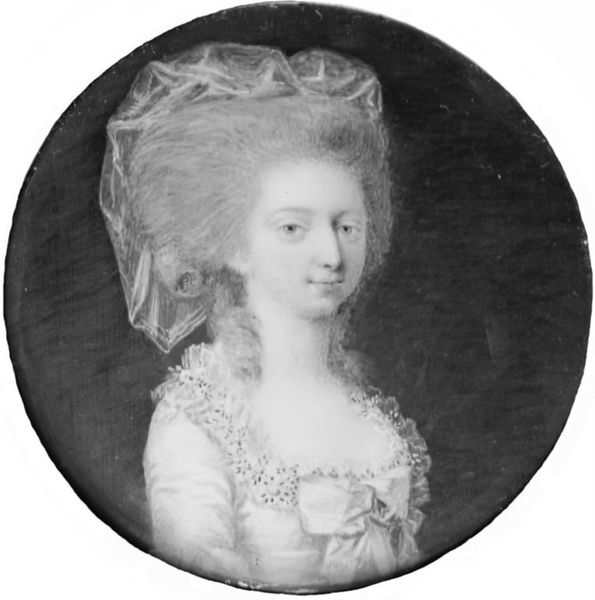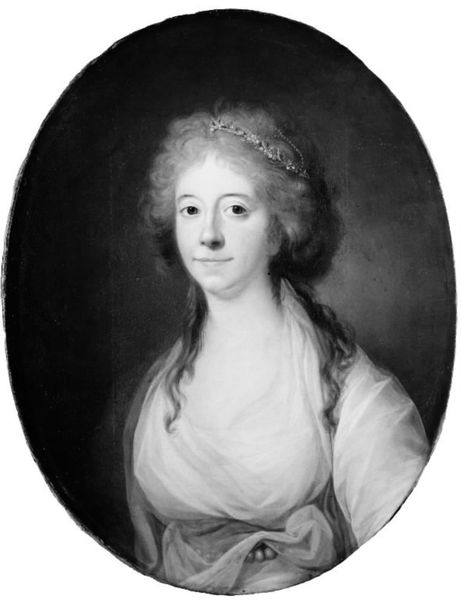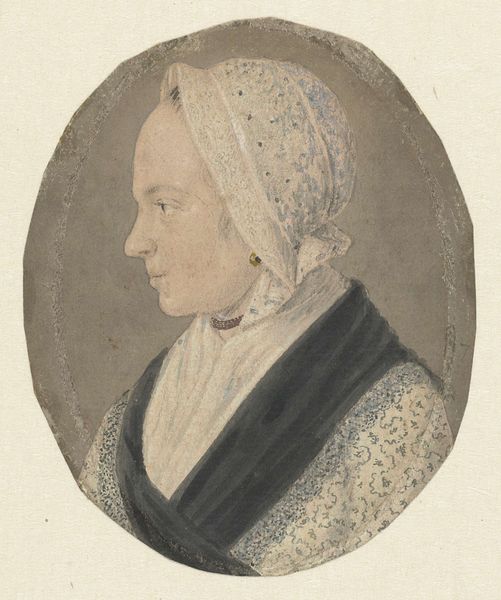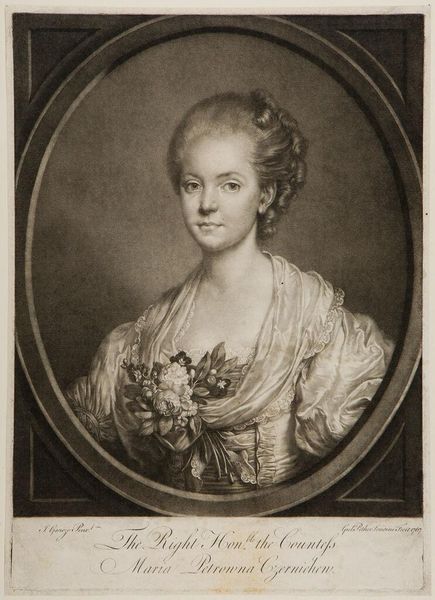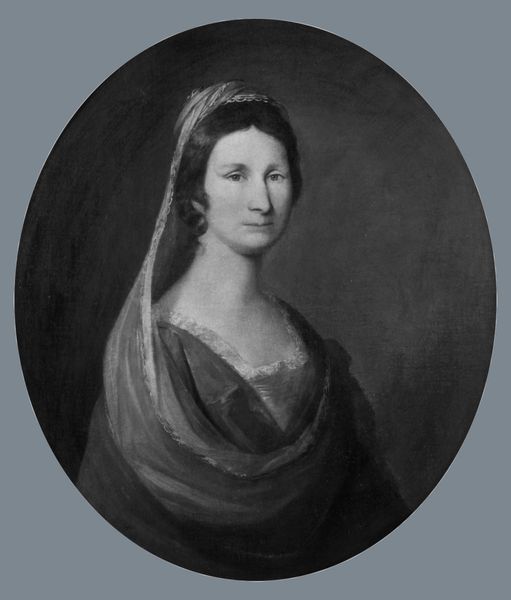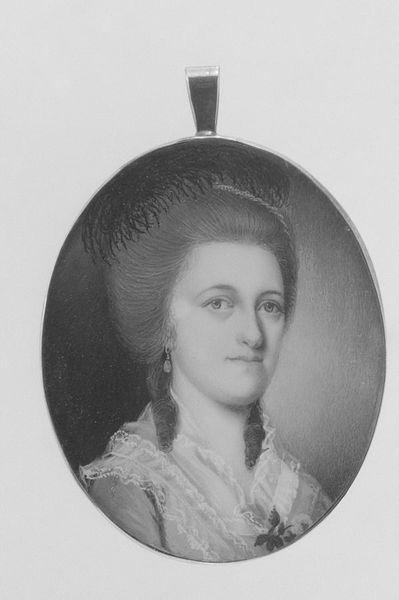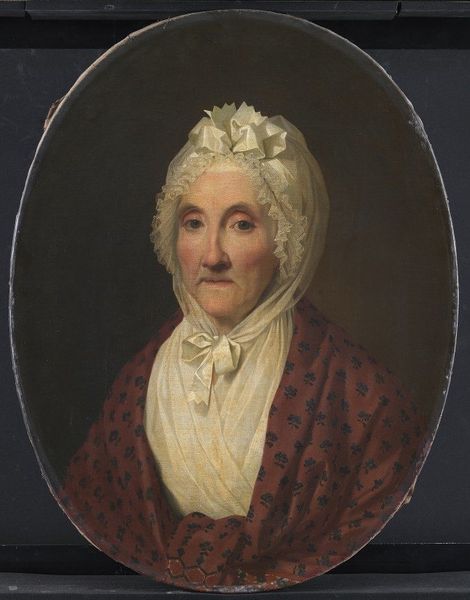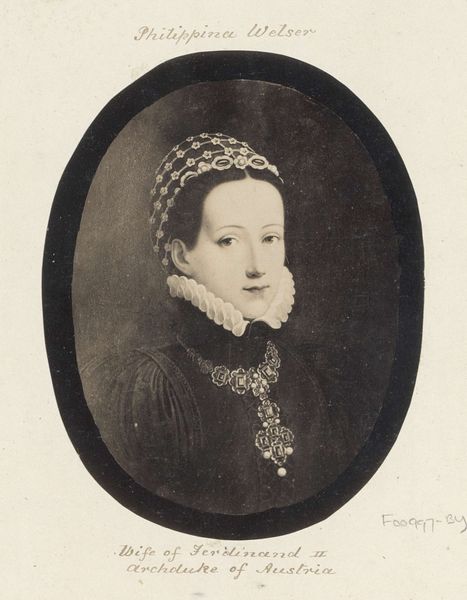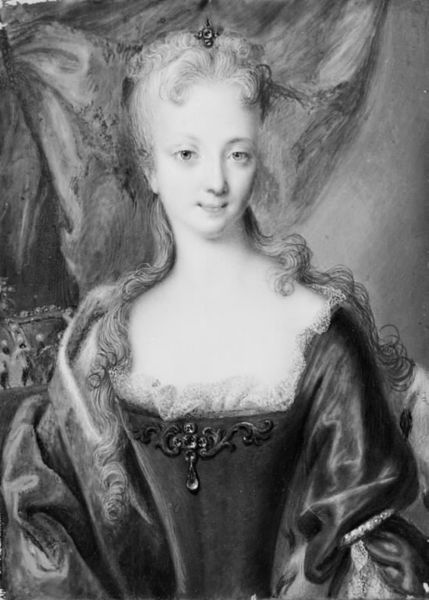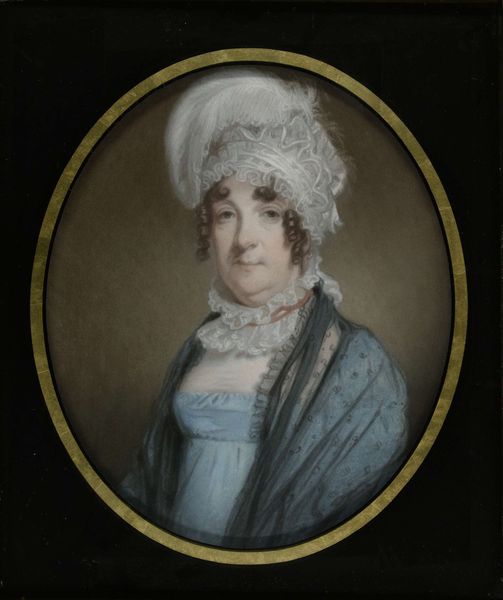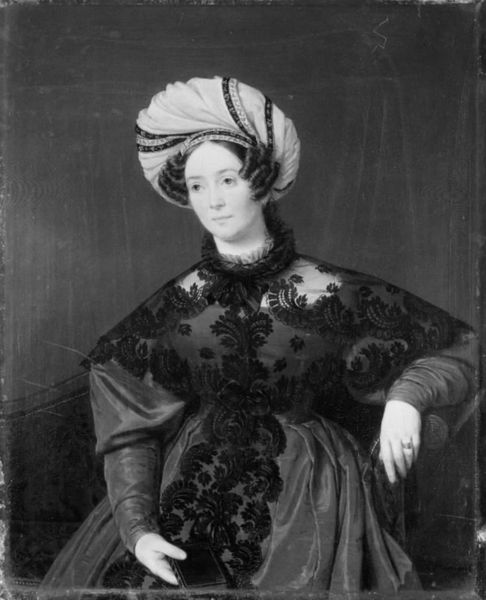
painting, oil-paint
#
portrait
#
neoclacissism
#
portrait
#
painting
#
oil-paint
#
academic-art
Dimensions: 9 3/4 x 7 7/8 in. (24.8 x 20 cm)
Copyright: Public Domain
Curator: Welcome. We are standing before Charles Willson Peale’s "Portrait of a Woman," believed to have been created between 1772 and 1775. It’s currently held at the Metropolitan Museum of Art. Editor: Immediately, the somber, restrained palette strikes me, doesn't it? Almost monochromatic, which directs all the focus to the composition, particularly her face and the intricate headwear. Curator: Yes, the tones are subdued, typical of the Neoclassical aesthetic favored at the time, focusing on simplicity and order. Notice how her clothing avoids bright colors; all symbolic of a woman’s place and purpose in 18th-century society. Editor: Absolutely. It is painted as an oval—or what amounts to a circle-- emphasizing symmetry, balance, harmony and perhaps, aspiration to 'ideal' status, beyond material reality, beyond a concrete portrait? Curator: And there's that elaborate cap! Far more than mere head covering, the lace work would communicate position, even lineage to contemporary viewers. These items of adornment, despite being of monochrome shade, represent wealth and status—the symbols through which we discern who she was within the hierarchy of the period. Editor: The handling of the paint seems restrained. Brushstrokes blend almost invisibly; is that a method of 'containment'? And also how she appears enclosed by the oval limits imposed on the work? Is the medium here 'the message'? Curator: Quite possibly! Peale, and other portraitists, frequently had to convey aspects of character through subtle visual cues, which now must be actively sought by modern eyes. Editor: Her gaze also captures me; despite the artist and the painting methods aiming for "perfect" representation of reality, the essence of who she was still shines through, doesn’t it? Her soul... Curator: Agreed. The layering of symbol and visual structure create a portrait rich in socio-cultural insight. Editor: Definitely, analyzing this allows us a fascinating journey back through time and an intimate exchange with a life and time far beyond our own.
Comments
No comments
Be the first to comment and join the conversation on the ultimate creative platform.
